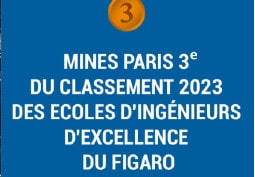Lucien Romani, a key figure in 20th century French engineering, left his mark on the history of renewable energies with his innovative spirit. In the late 1950s, he designed one of the first wind turbines for EDF, demonstrating exceptional technical expertise through the wind turbine in Nogent-le-Roi. Beyond this technical success, Romani also enriched the scientific field with his original physical theories developed in the 1970s. His creative vision opened new avenues for research and innovation, laying the foundations for today’s clean energy technologies.
Lucien Romani, a name that still resonates like an inspiring melody in the field of renewable energies, was much more than just an engineer. Born in 1909, he made history with his ability to combine vision and technique, thus sculpting the energy landscape of France in the mid-1950s. It was through his work on one of the first wind turbines for EDF that Romani demonstrated his unwavering commitment to innovation.
Romani never ceased to explore the frontiers of knowledge, immersing himself in various disciplines such as paleontology and geology, in search of a broader understanding of the world. This eclectic intellectual journey, often imbued with bold intuitions, allowed Romani to lay the groundwork for revolutionary theories in the 1970s. Never satisfied with the status quo, he always aspired to open new paths for science and engineering.
Despite challenges and criticisms, Lucien Romani remained true to his convictions. His unparalleled scientific work, of which the wind turbine of Nogent-le-Roi remains a brilliant illustration, testifies to his unique genius. Romani remains a guiding light for those who, today, seek to transform our energy future into a sustainable and environmentally friendly world.

The Promising Beginnings of Lucien Romani
Born in 1909, Lucien Romani quickly became a visionary engineer, dedicated to research and development in the field of wind energy. He designed one of the first wind turbines for EDF in the 1950s, a feat marking a significant advance for the technology of the time. His pioneering work was particularly highlighted by the aerogenerator of Nogent-le-Roi, which marked the industrial history of electricity in France. By anticipating the importance of renewable energies, Lucien Romani laid the foundations for modern energy transition.
The Development of Physical Theories
During the 1970s, Lucien Romani was not just an engineer, but also a prolific thinker. He proposed innovative physical theories, which, although alternative, were often met with a mix of skepticism and admiration by his peers. His intuition and ability to link diverse reasoning allowed for the advancement of original ideas in fields such as paleontology, geology, and even astrophysics. These theories opened new paths for reflection, thereby enriching the scientific debate.
An Indelible Legacy and Lasting Influence
The work of Lucien Romani remains a testament to the importance of innovation in the renewable energies sector. He shared his knowledge by leading a consulting office that operated on a self-financing basis for twenty years, employing up to forty people. Despite the controversies he sometimes faced, such as his involvement in the “sniffer planes” affair, Lucien Romani remains an iconic figure for those who, today, continue to push the boundaries of science and technology. His legacy exists not only in the wind turbines he helped design but also in the spirit of innovation he inspired across generations. More information can be found on the Wikipedia page of Lucien Romani and other online resources. It is these inspirations that shaped and propelled Lucien Romani to the title of pioneer of renewable energies, whose ideas continue to influence today’s world.
Articles similaires
Thank you!
We will contact you soon.














